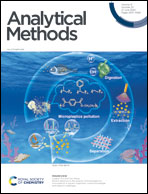Sample treatment based on molecularly imprinted polymers for the analysis of veterinary drugs in food samples: a review
Abstract
The use of veterinary drugs in medical treatments and in the livestock industry is a recurrent practice. When applied in subtherapeutic doses over prolonged times, they can also act as growth promoters. However, residues of these substances in foods present a risk to human health. Their analysis is thus important and can help guarantee consumer safety. The critical point in each analytical technique is the sample treatment and the analytical matrix complexity. The present manuscript summarizes the development, type of synthesis, characterization, and application of molecularly imprinted polymers in the separation, identification, and quantification techniques for the determination of veterinary drug residues in food samples in extraction, clean-up, isolation, and pre-concentration systems. Synthesized sorbents with specific recognition properties improve the interactions between the analytes and the polymeric sorbents, providing better analysis conditions and advantages in comparison with commercial sorbents in terms of high selectivity, analytical sensitivity, easy performance, and low cost analysis.



 Please wait while we load your content...
Please wait while we load your content...